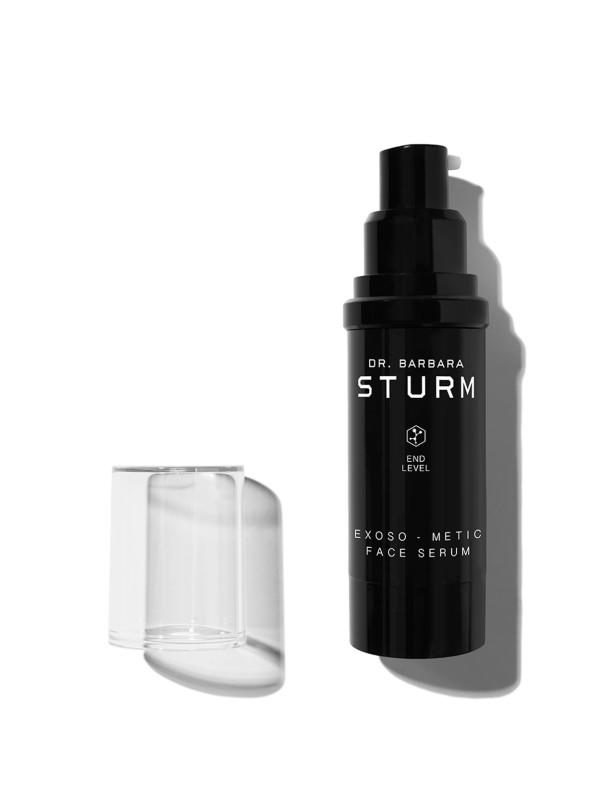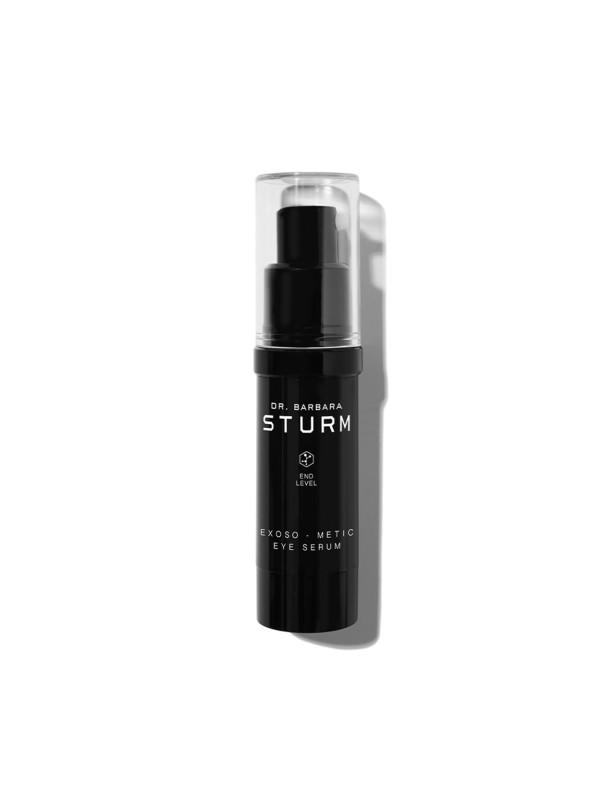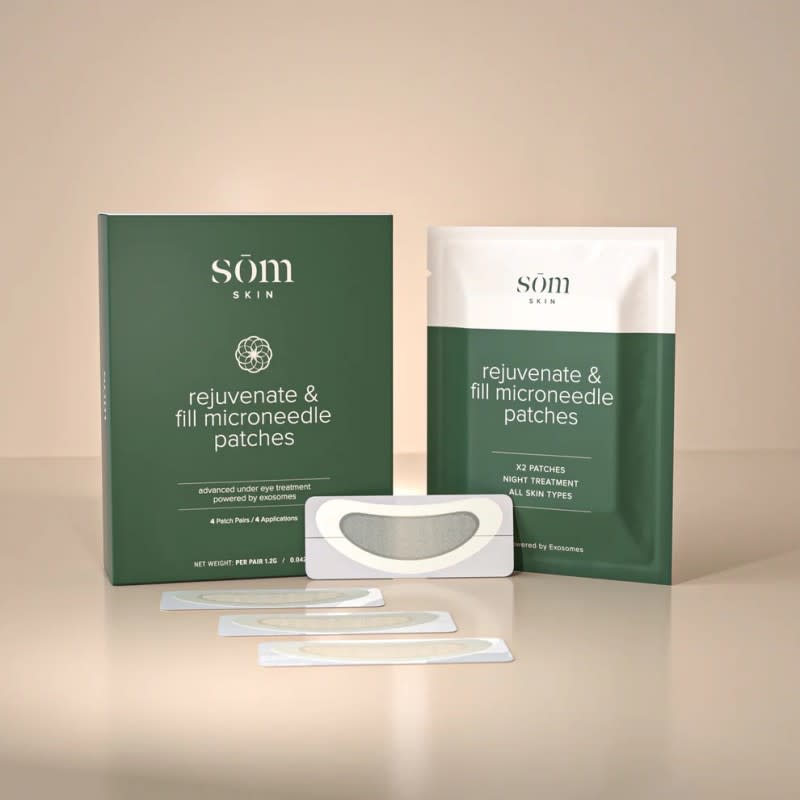Are Exosomes Set to Change the Beauty Industry as We Know It?
For those with their fingers on the pulse of the beauty industry, it's easy to pinpoint the moment in time when certain ingredients (think hyaluronic acid or CBD) surged in popularity, appearing in countless formulas across retailers from Sephora to Target, being touted by experts or even inspiring the creation of entire brands. Some of these ingredients — oftentimes the ones with proven clinical benefits, like vitamin C or retinol — steal the marketing spotlight for years, while others quickly fall to the wayside.
We don't know which way "exosomes" will go in the long term, but given the buzziness of regenerative medicine and its influence on skin care, plus the fact that we've already seen them featured in a few skin-care product formulations (including products from Dr. Barbara Sturm and Angela Caglia), it's proved to be a trending ingredient worth breaking down.
What are exosomes?
"Exosomes are tiny vesicular structures that help cells communicate by transferring molecules between them," explains Dr. Annie Chiu, a board-certified dermatologist and founder of The Derm Institute in North Redondo Beach, CA. "Technically, the term 'exosome' just refers to the envelope-like structures that these communication proteins travel in."
The allure of exosomes is the type of information the vesicles may carry (like proteins, mRNA, lipids and growth factors) and pass along between skin cells — and the action, or skin benefit, that info could possibly elicit.
"Exosomes transmit information between skin cells to support processes like cell repair, collagen production, anti-inflammatory responses, cellular defense and pigmentation regulation," says Dr. Chiu. "They play a vital role in maintaining overall skin health and function."
What are the potential benefits of exosomes in skin care?
Whether exosomes deliver these targeted benefits when used as an ingredient in a skin-care product or in tandem with a skin-care treatment is a little more complex, and even a bit confusing.
"I think this technology is very interesting in theory, but more research needs to be done to confirm they actually deliver results," notes Ron Robinson, a cosmetic chemist and the founder and CEO of BeautyStat.
As for how skin-care brands are sourcing these exosomes? According to Robinson, they can be obtained from plants or microbes, or synthesized in a lab "by various methods that include isolating, mixing, centrifuging plants, tissues or cell cultures." (Dr. Barbara Sturm's Exoso-Metic Face Serum and Eye Serum both utilize lab-synthesized exosomes.)

Photo: Courtesy of Dr. Barbara Sturm

Photo: Courtesy of Dr. Barbara Sturm
Exosomes can also be human-derived — Dr. Diamond specifically points to sources like "mesenchymal stem cells that come from bone marrow, adipose, umbilical or placental tissues."
How are exosomes used in beauty products and treatments?
Dr. Marina Peredo, a board-certified dermatologist based in New York City, utilizes exosomes in the form of ExoCel Bio's Exovex serums, to complement treatments like lasers and microneedling in her practice. (Disclosure: Dr. Peredo is also a director on the board of ExoCel Bio.) These exosome products are derived from mesenchymal stem cells from a donated human placenta, and are available in four different concentrations, ranging from 5 to 100 billion non-lyophilized exosomes per vial.
"They range [in size], depending on the cell that produces them, anywhere from 30 nanometers to a 100 nanometers in diameter — so they're tiny," says Dr. Peredo.
Which concentration is used depends on the type of skin concerns addressed in a treatment. For example, according to ExoCel Bio, the "Revive" treatment contains 5 billion exosomes, and is used for "enhancement of facial skin and under-eye treatments"; "Renew" has 12 billion exosomes, and is used to reduce downtime and post-procedural discomfort after aesthetic procedures.
In Dr. Peredo's practice, the exosome-infused serums are thawed from their frozen state and applied immediately onto any area that was treated during a procedure. (This may consist of the face, neck and chest.) Because the serum is ice-cold when applied, it also supplies an instant cooling effect. It can help speed up recovery time and further enhance results, she says.
"Let's say you do a laser procedure — skin is red, hot and inflamed. You put exosomes on post-procedure, it kind of decreases the redness and pain," Dr. Peredo explains.
The exosomes enter the skin via open channels that were created during either a laser or microneedling session; as they penetrate the skin, they promote recovery and enhance the treatment's overall results. "It [the serum] is left on and absorbs into the skin," says Dr. Peredo. "If the treatment is done in the evening, you sleep with it and then wash your face in the morning. The serum is not to be taken off." (Patients are told not to touch their faces. In the morning, they can resume their skin-care routines.)
Dr. Peredo notes that exosomes are ideal for anyone looking for a preventive or corrective treatment — and also "anybody who can afford it." At her practice, the add-on cost of incorporating exosomes into a treatment ranges from $300 to $500.
Dr. Jason B. Diamond, a Beverly Hills-based facial plastic surgeon, uses exosomes as a part of his InstaFacial-X treatment, and has been using them in-office for about five years. He says the effects of exosomes in clinical practice can be compared to that of Platelet Rich Plasma Therapy (PRP), popularity dubbed the "vampire facial" (in which a patient's blood is drawn, spun into platelet-rich plasma and reinjected into the face or applied topically) to address signs of aging like uneven skin texture). They have "potential to possibly be better than PRP in years to come," he says, adding that these vesicles "help cells behave younger than they are."
Remember, unlike PRP, exosome products aren't made from your own blood or bodily fluids.
"A lot of times, for me personally, anytime I do a procedure, if I don't use PRP, I use exosomes," says Dr. Peredo. "First of all, I don't like the recovery, because I'm impatient. Why am I wasting this beautiful fertile port of entry? So I want to put something on to enhance the treatment."
What over-the-counter options are there for exosome products?
ExoCel Bio's serums are only for professional use, but exosomes are starting to pop up in over-the-counter — albeit rather expensive — skin-care products as well.
Dr. Barbara Sturm's Exoso-Metic line consists of a face serum and an eye serum formulated with lab-synthesized exosomes to improve skin texture and appearance. (Both retail for more than $400.) Som Skin, a new brand that launched in 2024, is utilizing exosomes as an ingredient in its $280 Rejuvenate & Fill Microneedle Patches, which feature self-dissolving microneedling technology that penetrate the skin to supposedly allow better absorption of the formula within the patches. *(The brand claims the patches offer a smoothing effect and help skin appear brighter and more hydrated.)

What risks or potential downsides are associated with exosomes?
It's worth noting that every expert we interviewed mentioned that consumers should exercise caution and keep a critical mindset when it comes to exosome-enhanced treatments and exosome skin-care products.
Dr. Chiu says that research on the efficacy of exosome skin care is "still evolving," and "dermatological use of exosomes is poorly defined." Currently, there are no FDA-approved exosome products for any use.
"It's important to note that since exosome therapy is not FDA-approved, there's little regulation of these treatments," adds Dr. Marshick. "For this reason, it's important to go to a place that you trust and are made aware of the potential risks and benefits."
What's also unclear, per Dr. Chiu, is which products have what exosomes: "There are no head-to-head studies that give clarity on what exosomes are most potent, other than marketing!"
When we asked Robinson if there was an ideal exosome source for skin care, he reiterated that "exosomes" are just delivery systems. "It depends on what's in it and whether or not they can reach the desired destination in order to take action," he said.
Then, of course, there's the topic of where and how exosomes are being sourced and processed, and if they've been screened for safety. In addition to potentially negative individual skin reactions and unknown long-term effects, Dr. Chiu notes that "more serious side effects may include tissue damage if the exosomes aren't correctly targeted or if they communicate undesired genetic information to skin cells."
Dr. Marisa Garshick, a New York City-based board-certified dermatologist, echoes this sentiment: "Because exosomes are not fully studied, the side effects and tolerability are not fully known. Additionally, because exosomes may be human-derived, they must be tested, and it's important to ensure that they don't contain unwanted donor cells."
Dr. Diamond believes FDA approval for exosomes will be a reality in the future, and that it will "pave the way to more and more uses for exosomes." One can assume that may mean a major change in how we approach skin aging (and many more skin-care products), too.
Please note: Occasionally, we use affiliate links on our site. In no way does this affect our editorial decision-making.
Never miss the latest fashion industry news. Sign up for the Fashionista daily newsletter.

